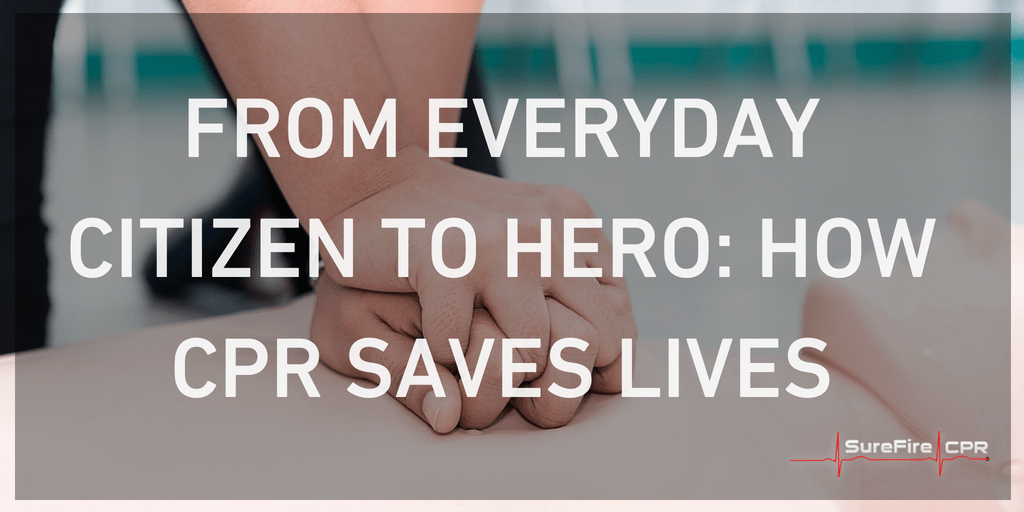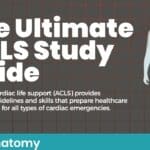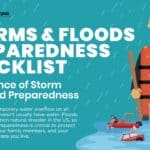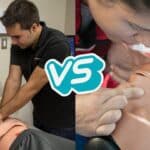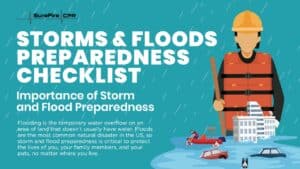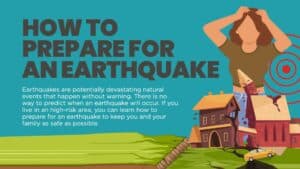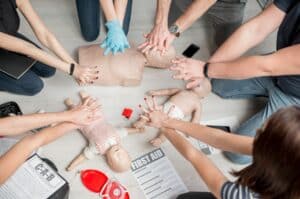Tom enters the Farmers Insurance building in Seattle with colleague Alex Schimp. It’s a short walk – “not too strenuous,” Tom says – to go to the “war-room,” an upstairs conference room best-known for its flurry of notes of all shapes, sizes and colors scattered all over the walls. Alex enters the war-room. Tom follows.
“Oh my,” Tom says as he enters the war-room behind Alex. A typical war-room response. But as Alex turns around, he quickly realizes the war-room is the last thing on Tom’s mind.
Tom slips and falls right in the doorway backward due to the weight of his backpack. At least, that’s what Alex thinks at first. Tom’s eyes aren’t moving. Tom then gives an agonal gasp and exhales.
“It seemed like it was slow motion,” Alex recalls. Alex moves Tom out of the doorway and shouts for help. Farmers’ team members arrive on the scene, call 911 and help get Tom’s backpack off so he can lay flat on the floor. A woman administers chest compressions to Tom. A front desk security officer locates a bag valve mask to help Tom breathe. The security officer also searches for an automated external defibrillator (AED). Farmers have an AED on hand, but there’s not enough time to use it.
2 minutes, 35 seconds. Emergency medical services (EMS) responders arrive 2 minutes, 35 seconds after the 911 call. In total, eight emergency medical technicians (EMTs), firefighters and police officers – one-and-a-half blocks away from the Farmers office – respond to the call. EMS responders perform two AED shocks on Tom and get no response from him. On the third try, EMS responders get a response. It takes EMS responders another 10 minutes of shocking Tom’s heart to stabilize him. Then, they transport Tom to a nearby hospital.
Tom is unconscious, but his heart is beating, and he has a breathing tube in place. He is put into a state of hypothermia to lower his body temperature. After a few days, doctors successfully raise Tom’s body temperature, and Tom regains consciousness.
Like the capsule in “Apollo 13,” Tom’s body is very slow to restart. His vision is blurred. His body aches. His balance and motor skills are bad. He has pneumonia. His speech is barely discernable. And there are so many IVs and plugs in his body, Tom loses count. But each day, things get a little better for Tom. And each day, Tom gets a little closer to being his old self.
Doctors perform an angiogram on Tom. They insert a wire into an artery in his wrist and snake it through the artery to his heart. Dye is inserted into Tom’s heart to identify blockages and other potential reasons for Tom’s collapse. No root cause is identified. Tom’s diagnosis: sudden cardiac arrest (SCA).
SCA refers to the unexpected loss of the heart function, breathing and consciousness, and it can happen to any person, at any location and at any time. It occurs due to an electrical disruption that interrupts the heart’s pumping action. When this happens, blood flow ceases to the rest of the body. And if SCA goes unaddressed for more than a few minutes, the consequences can be fatal.
Tom had no history of heart trouble, high blood pressure, high cholesterol or other red flags to make him think he was at risk of SCA. Yet SCA is more common than most people think. The Sudden Cardiac Arrest Foundation (SCAF) points out approximately 356,000 people experience EMS-assessed out-of-hospital non-traumatic SCA each year. Among these SCA victims, nine out of 10 die.
“It’s a miracle – yes, a true miracle – that I’m alive today,” Tom says. Tom now has a pacemaker set to provide continuous heart monitoring, as well as a built-in defibrillator that activates in the event that his heart ever stops working. He credits Alex, the Farmers’ team, EMS responders and hospital staff for saving his life.
“Everyone needs to get trained,” Alex says, referring to CPR, “[because] you don’t know when you are going to need it.” Alex received cardiopulmonary resuscitation (CPR) training annually from 1983 to 2000. But prior to the SCA emergency involving Tom, Alex never faced a real-life cardiac emergency. Soon, he plans to receive formal CPR training once again. Alex urges others to sign up for CPR classes, too.
“Think about who is around you all the time. Those are the people that you need to make sure are trained [in CPR],” Alex recommends. There is no telling when a cardiac emergency will happen. With the ability to administer chest compressions and other life-saving techniques to SCA victims, anyone – regardless of age or background – can help reduce the loss of life.

